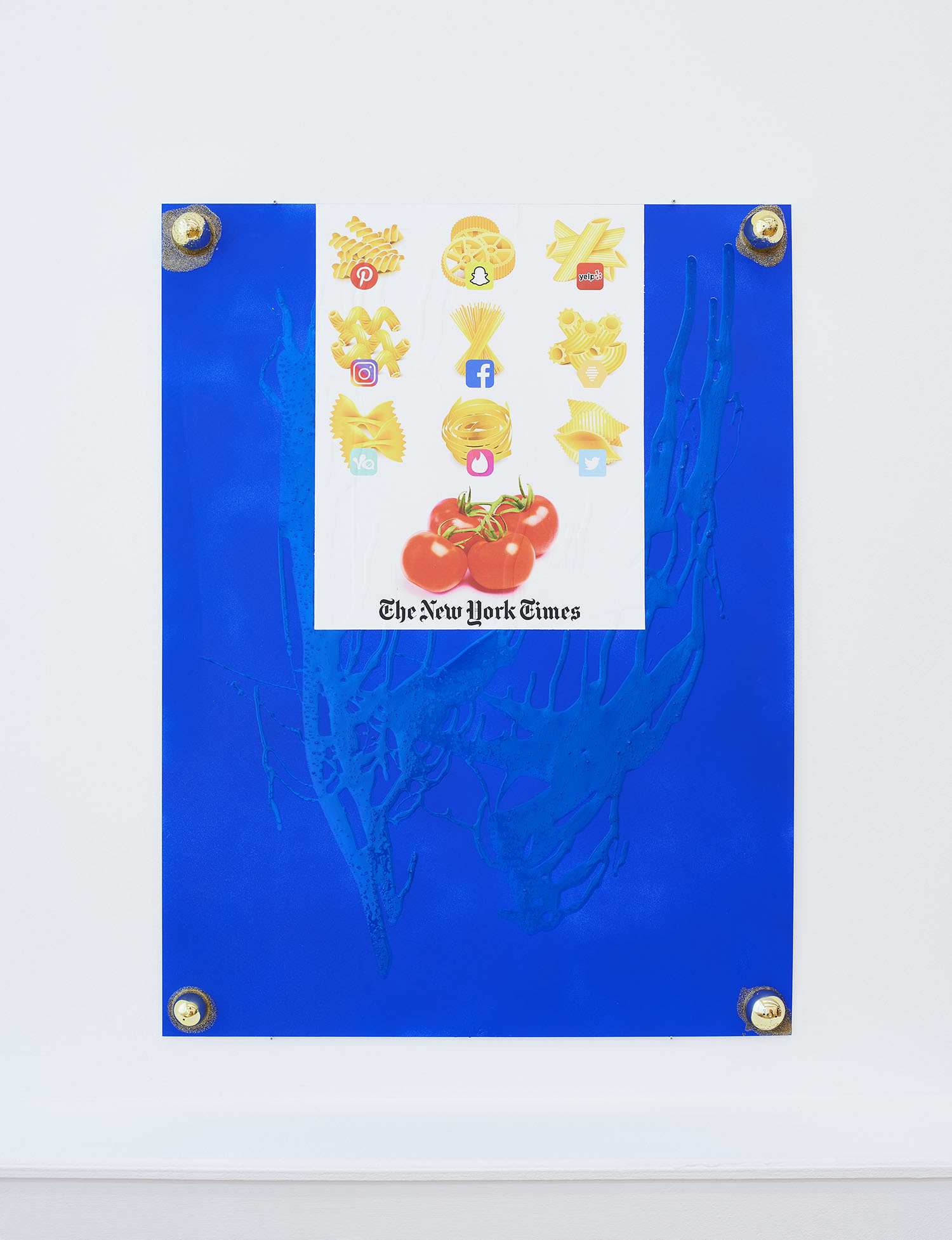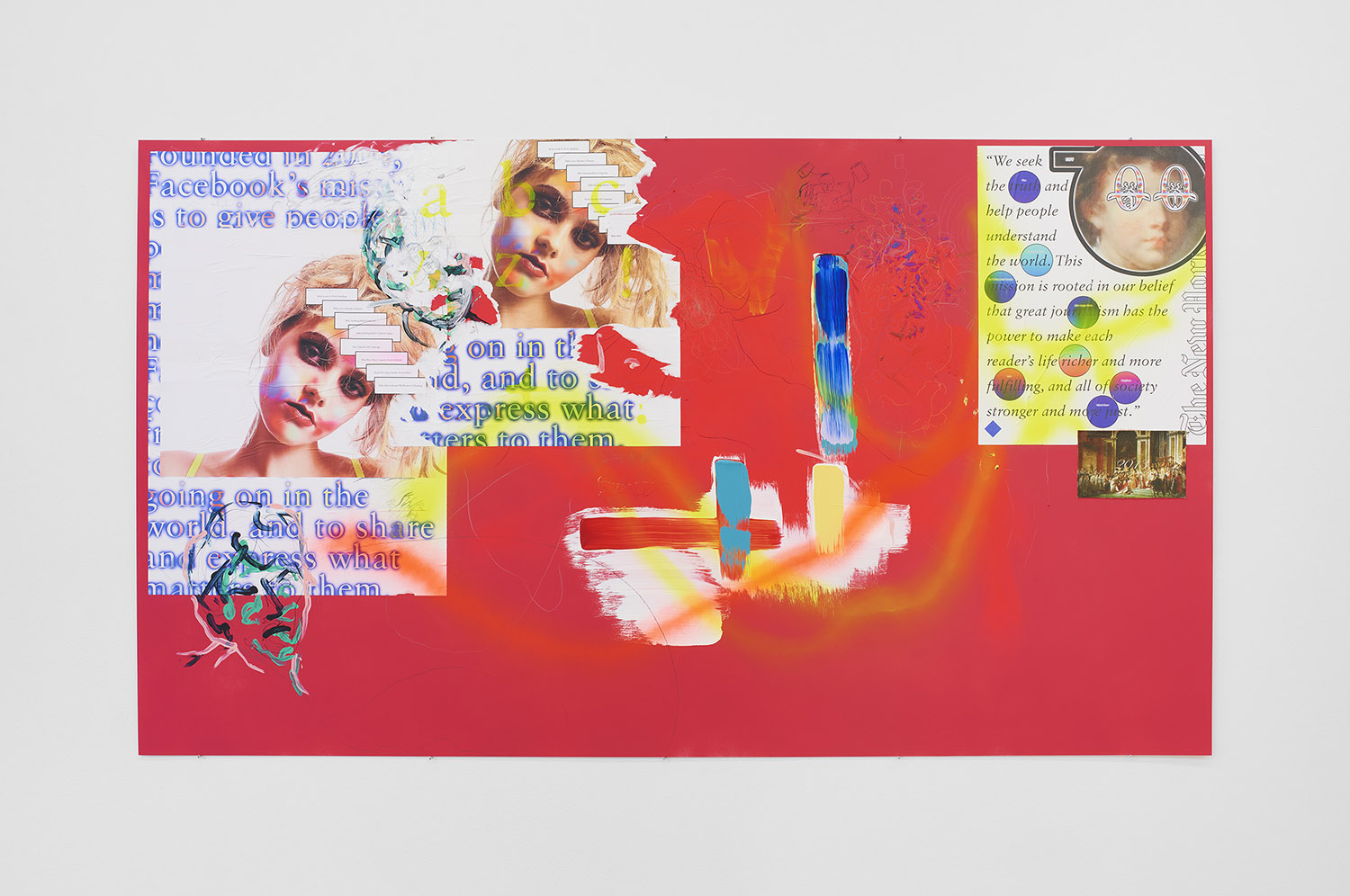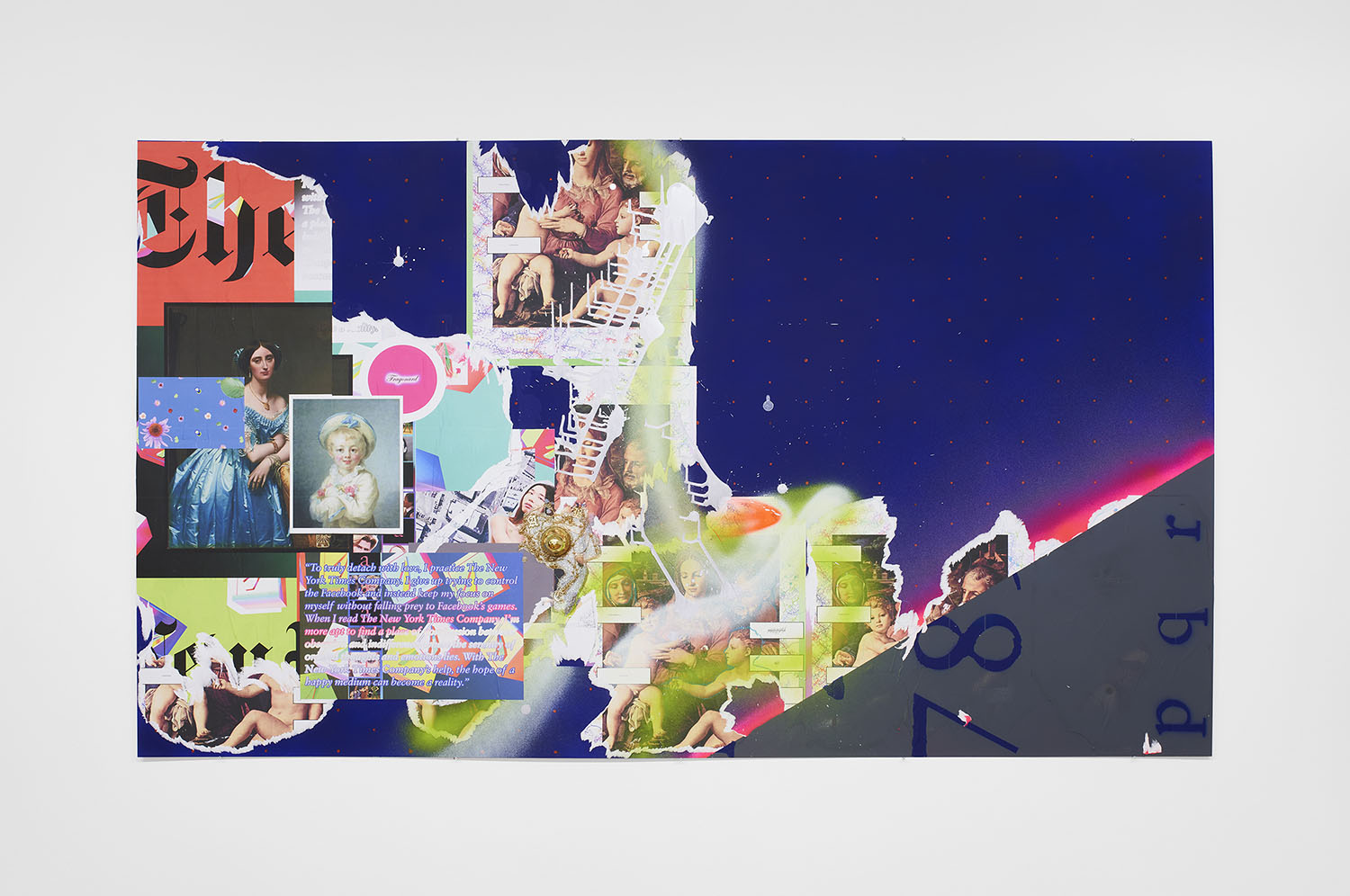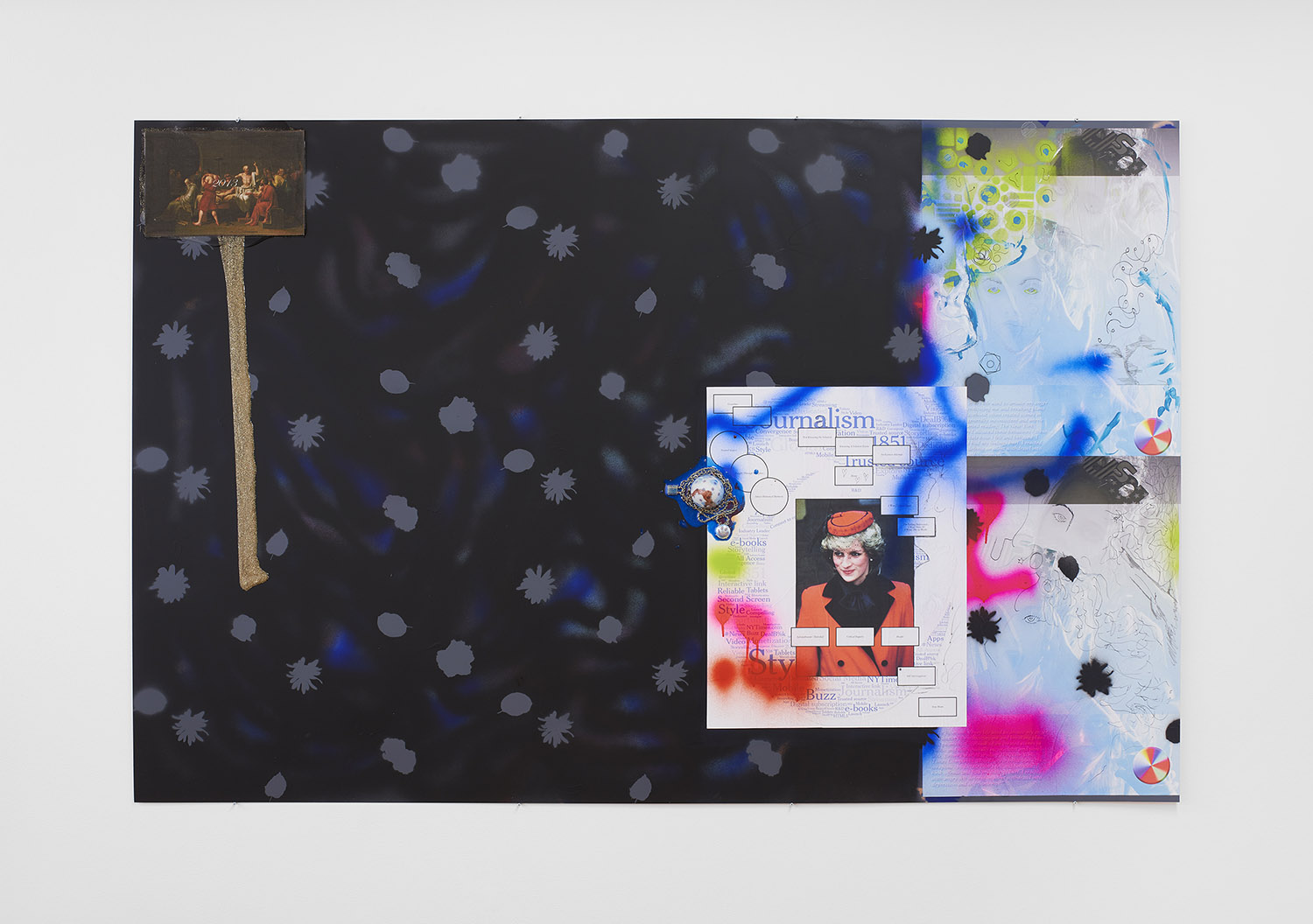Carter Mull
Programmatic Ledger Books
May 15 - June 26
Programmatic Ledger Books
May 15 - June 26

If any divide remains between what we claim as visual culture and the overwhelming position that the creation and consumption of images currently occupies within our interpersonal relationships, that is where you will find the work of Carter Mull. It seems a rather uncomfortable place to be, but Mull’s work emerges from this confrontational space full of a vibrant complexity that reflects the intensity with which he faces the structures, impulses, and desires driving the ever-expanding sociocultural phenomenon of the image. Crucial to Mull’s concerns about how images operate on both massive and intimate scales is a relationship defined by reflexivity: what are we doing with images and what is being done to us with images?
The drawings, videos, and books that Mull creates in response to these concerns resist simply making us aware of his assessment of our apparently limitless ability to generate and absorb images. Instead, his works arrive as fields of critical expression that continuously navigate what his research finds, what he makes of it, and how he responds to his own responses through further making. Central to this exhibition, and demonstrated most directly through Mull’s book works, is a moment he’s identified in 2013 which saw Facebook’s rapid growth as an internet content business coinciding with a remarkably poor fiscal year for the New York Times Company. His analysis of relevant financial data led to the development of an understanding that these drastic shifts happening in parallel between these two companies represented a transformation in information volume from one considered to be an intelligent public voice to one motivated primarily by content for content’s sake, absent any need for criticality. Mull hypothesizes that in terms of human perception, this upheaval has been felt in a manner similar to how we deal with changing familial dynamics; less dramatic than a sudden death and more on the level of how something like an older sibling learning to drive might slowly start to destabilize relations. However great the impact of a destabilizing force might have, a certain kind of cohesion inherently remains within structures like family, a paradox not unlike the formal materializations in Mull’s work.
Within a single piece, presentation, representation, and production establish a knotty shared space like three hands intertwining all fifteen of their fingers together at once. Aluminum substrates receive various materials: paint is sprayed, dripped, and brushed; printed images, diagrams, and digital collages are wheat-pasted into place; jewelry is drowned in adhesive; glossy, gold-colored, plastic eggs are either precisely positioned or scattered throughout, oozing with glittery glue. Videos layer digitally sourced and modified images with footage and sound culled from the websites of companies situated within the internet consumer surveillance industry. Repeated and overlapping pictures obscure or frame transmissions from the jargon-loaded realms of the companies Palantir, Pubmatic, and Rubicon Project, delivering phrases to our ears and eyes such as “generate valuable and exclusive first-party data”, “deterministic profile”, and “omnichannel solutions.” Books titled “The New York Times Earning Call Transcripts and Earnings Press Releases Quarters 1, 2, 3, and 4 2013” and “Facebook Earnings Press Releases Quarters 1, 2, 3, and 4 2013” bring together the facts & figures one might expect from earnings press releases along with the artist’s notes, collages, and painted and drawn marks.
Carter Mull’s work has a demanding, nonstop quality that requires a rigorous engagement that ultimately rewards the willing and patient viewer. Whereas much of the territory mined for this exhibition might be said to exist on a spectrum of claims to our attention that runs from aimless to insidious, Mull still finds room in there for meaningful connections. With these artworks, he offers an opportunity to reconcile these variations of type and potentialities, inviting us to slow down and question the terms at hand without telling us where to look, what to think, or how to feel.
Carter Mull lives in Los Angeles. He took his BFA in Painting from Rhode Island School of Design in 2000 and MFA from California Institute of the Arts in 2006. Mull has exhibited all over the world and his work can be found in the collections of the Walker Art Center, the UCLA Hammer Museum, the Los Angeles County Museum of Art, the Orange County Museum of Art, the Whitney Museum of American Art, The Museum of Modern Art, The Getty Research Institute, and the Museum of Contemporary Art, Los Angeles. His practice has been discussed in publications and periodicals, including Artforum, Art on Paper, Art In America, The Los Angeles Times, and The New Yorker.

The New York Times Earning Call Transcripts and Earnings Press Releases Quarters 1, 2, 3, and 4 2013, 2021, dimensions variable, unique; Facebook Earnings Press Releases Quarters 1, 2, 3, and 4 2013, 2021, dimensions variable, unique

Starch and Acid, 2021, paper, printing ink, paint, resin and pigment on aluminum, 42 1/4 x 31 7/8 inches

Red, Blue, 2021, paper, printing ink, paint, fabric, graphite, resin, and pigment on aluminum, 44 1/4 x 77 1/2 inches

Celebrity Family, 2021, paper, printing ink, paint, resin, glitter and golden eggs on aluminum, 66 3/8 x 43 1/4 inches

Onavo, 2021, paper, printing ink, paint, resin, pigment, and jewelry on aluminum, 66 3/8 x 43 1/4 inches

Special Child, 2021, paper, printing ink, paint, fabric, graphite, resin, pigment, golden egg, and jewelry on aluminum, 44 1/4 x 77 1/2 inches

Death of Socrates, 2021, paper, printing ink, paint, fabric, graphite, resin, pigment, speckled egg, and jewelry on aluminum, 43 1/4 x 66 3/8 inches